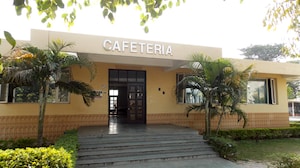CUET UG: Three years in, systemic issues remain unresolved
But three years after it was introduced, educators and students are raising grave concerns about the enduring problems with the test.

Introduced in 2022, the Common University Entrance Test (CUET) UG was designed to simplify the undergraduate admissions procedure for central universities in India. But three years after it was introduced, educators and students are raising grave concerns about the enduring problems with the test.
From an academic standpoint
Samrendra Kumar, a former member of the Academic Council and a professor of Hindi at Delhi University:
Professor Samrendra Kumar drew attention to CUET UG's structural problems. In 2022, test locations were assigned to students remotely, and they were rearranged just one day before the exam.
The answer key for 2023 contained serious mistakes, with 30 to 40 percent of the answers being incorrect. Students also had to pay Rs 200 for each question they wanted corrected, which added to their financial hardship.
This year, the exam was administered using pen and paper again, and students experienced added stress due to last-minute center changes. "This sudden change has impacted students," he stated. There are still delays despite the examination's objective nature, which ought to enable prompt outcomes.
Sessions used to begin in July, but as of right now, not even I know when they will begin. Due to the delayed admissions procedure after CUET's adoption, students have begun to transfer to private institutions and universities.
The first semester of last year began in December, and the admissions process ran until October.
Professor Kumar also aimed the National Testing Agency (NTA) for not having the necessary infrastructure in place to manage large-scale exams.
"NTA administers three different kinds of exams: recruiting, fellowship, and entry. However, it is challenging for one organization to handle such extensive operations without adequate infrastructure. The exam schedule has to be modified."
History and Current Difficulties
The purpose of CUET UG is to standardize and centralize the admissions procedure to central institutions. However, there have been several problems with the execution, ranging from technical difficulties with computer-based exams and mistakes in answer keys to logistical obstacles like distant testing centers and last-minute venue changes.
In addition to causing stress to students, these ongoing issues have caused the academic calendar to be delayed, which has forced students to turn to private colleges to be admitted on time.
The call is growing louder for NTA to address these flaws and streamline the process as recurrent problems are observed in the third year of CUET UG. The future of higher education in India depends on having an examination system that is reliable, open, and effective.
Read More
- #CUET PG 2024 Exam
- # CUET PG preparation
- # CUET UG Exam
- # CUET PG exam preparation
Unlock yourpotential!
Let us know your preference and our team will guide you toward your academic journey. Stay tuned for personalized advice.
FAQ's
The CUET UG was introduced in 2022 to simplify the undergraduate admissions process for central universities in India by standardizing and centralizing the admissions procedure.
Major issues include remote assignment and last-minute changes of test centers, significant errors in the answer keys (with 30-40% of answers being incorrect), high fees for correcting answer key mistakes, technical difficulties with computer-based exams, and logistical challenges.
These issues have caused significant stress for students, delays in the academic calendar, and prolonged admissions processes. As a result, many students have opted to enroll in private colleges and universities to avoid the uncertainty and delays associated with CUET UG.
Criticisms of the NTA include its lack of adequate infrastructure to manage large-scale exams, the handling of multiple types of exams (recruiting, fellowship, and entry), and the inability to promptly address the technical and logistical issues that have arisen.
Suggestions for improvement include enhancing the infrastructure and capacity of the NTA, modifying the exam schedule to avoid delays, ensuring accurate and timely answer keys, and establishing more reliable and consistent test center assignments to reduce student stress and logistical challenges.
Latest News

Direct link to the CUET UG 2024 re-exam admit cards is available

Admit cards for the CUET UG retest are released by NTA via exams.nta.ac.in/CUET-UG

Admit cards for the July 19 retest of the CUET UG 2024 will soon be available

JNU and DU delay first semester classes due to the CUET UG 2024 result postponement
Photos and Videos

















COMMENTS (0)